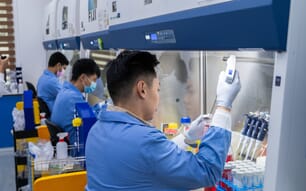Can you tell us about your interest in / experience of the eel industry?
I have been driving the eel business for Europe’s leading eel feed producers for the past 17 years, first with Dana Feed and then the BioMar factory in Denmark. I work very closely with eel farmers all around Europe and beyond.
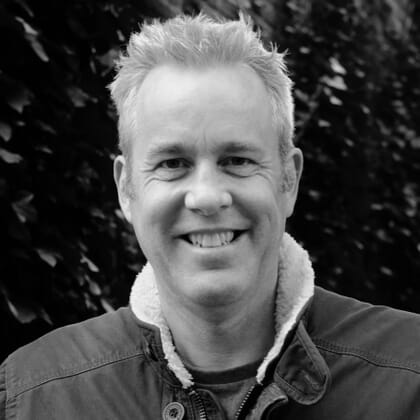
What I like about it is that I am involved in everything connected to our eel business. I am responsible for sales and technical support to all eel farms, even those in areas where we have other factories. Because the eel market is quite small, with often only one or a just a few farms in each country, it is difficult for regional sales people to have all the background knowledge necessary to serve the eel farmers well. With my combination of academic and practical knowledge and long experience in the eel sector, I can support the customers in all the specific aspects of eel farming. At the same time, I have an excellent overview of new developments in the entire eel market. With a background in fish nutrition I also serve as the link between the field and the factory and together with our feed formulator, Lars Holst, I am responsible for all developments in our eel feed.
Eels are often seen as one of the most enigmatic fish on the planet – why do you think that is?
Eel species are widely distributed around the world, yet we know surprisingly little about their life history. They migrate large distances from the ocean spawning sites to fresh water, where they grow from tiny glass eels to mature silvering eels, after which they return to the ocean for the long trek back to their spawning location. Although we do know the general spawning location for some species by searching the ocean for smaller and smaller larvae, no one has ever seen eels spawning in the wild and much of the mystery still remains.
What tonnage of eels is produced via aquaculture in Europe each year?
The latest FEAP data from 2016 put the entire production in Europe at 6,098 tonnes per year. There has been a steady decline in number of farms and production volume since the beginning of the millennium, when the annual production was as high as 11,000 tonnes.
How does this compare with wild capture tonnage?
Around 1960 the landings of wild European eel were around 20,000 tonnes a year, but since then reported catches have declined to around 2,500 tonnes (EIFAAC/ICES/GFCM WGEEL report 2017). Since the end of the 1990s, aquaculture has been the leading source of eels for the table in Europe.

Where are the main producers located and why?
Traditions for eel consumption are quite different around Europe and in the past a great number of eel farms were spread out around Europe, each catering to the area’s specific demands for size, quality and processing of eels. With the decline of the number of eel producers, and increasing farm sizes, the trade has become more international.
The centre of European eel production, and consumption, is still in Holland, where smoked eels are the most popular form. The second largest production is in Germany, which caters mainly for the local market and Holland. Denmark is the third largest producer with some sales to the home market, Poland, Holland and Italy. In the south, Italy and Greece produce mainly for the Italian market, where eel is still a traditional Christmas delicacy. A large farm in Spain produces for both the southern and northern European markets. Other medium- and smaller-sized producers can be found in Sweden, the Baltic states, Poland and Portugal where traditional eel markets still exist.
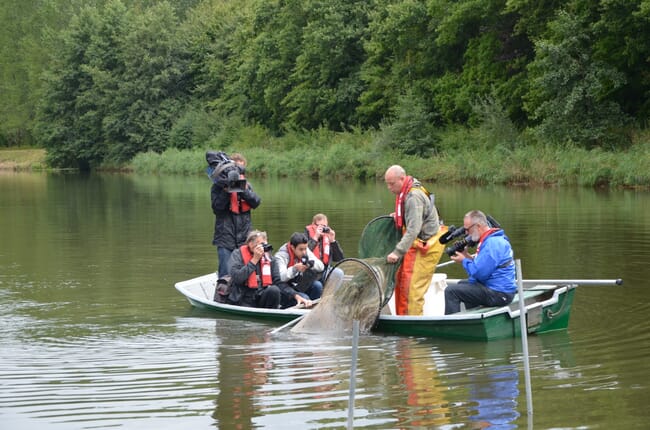
What types of systems are favoured for eel production?
More than 80 percent of the eels farmed in Europe are produced in recirculation aquaculture systems (RAS). This allows for production under optimum conditions, even in colder climates. The water can be reused many times with the help of mechanical and biological filtration systems, resulting in very low water use for these farms. Thanks to increasingly efficient heat retention in the farms, little energy is needed to keep the water temperatures at optimum production levels all year round, making for very efficient production systems. Fast-growing soft eels from these systems are favoured by northern European customers.
In contrast farms in Italy – including the oldest farm in Europe, established in 1970 – and Greece use flow-through, open ponds or tanks. Here temperatures fluctuate during the year and the fish are exposed to sunlight. Although densities in these farms are lower and the eels grow slower, these eels are favoured by customers in the south because of their colour and firmer flesh.
Eel production relies on the capture of juveniles. Where and how does this take place? And how sustainable is this exploitation at a time when European eel stocks are struggling?
Glass eels arrive at the European coast all year round, but the big volumes are between November and May and are caught in France, Spain and the UK with hand nets, trap nets or small trawling nets in river mouths and estuaries. Glass eels from many fishermen are collected in glass eel stations from where they are traded to the eel farms or sold for restocking.
Even though the eel stocks are struggling, a lot of glass eels arrive in areas where they have little chance of surviving because access to the natural freshwater habitats has been blocked by dams, locks and hydroelectric power stations.
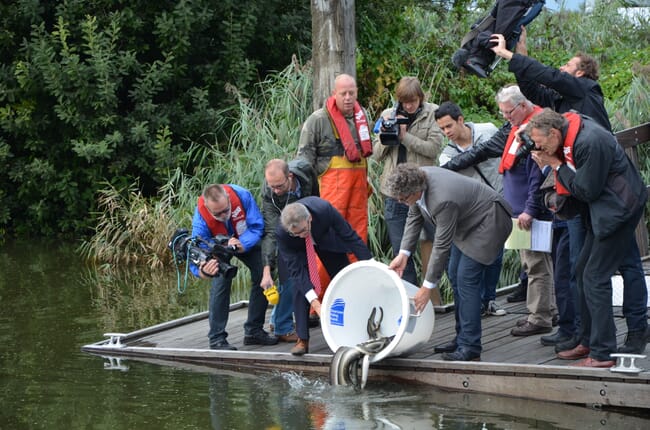
Following EU regulations a limited quota of these glass eels can be caught. Sixty percent of these have to be used for restocking in waters with a high chance of survival and 40 percent may be used for consumption, including on-growing in fish farms.
Research has shown that restocking is successful in creating eel stocks, and that restocked eels do migrate towards the Sargasso Sea after silvering. The eel industry is raising money in the main production countries, Holland and Germany, and soon Denmark, through the Eel Stewardship Fund. The money is used for conservation projects and scientific research, all for the benefit of the eel stock. This way the eel industry is showing that responsible production and recovery can go hand in hand.
Has the survival rate of on-grown glass eels changed much over time and what are the key reasons behind any changes?
The survival rates of glass eel are close to 100 percent in the context of the current farming practice in Europe. While at the very start of eel aquaculture in Europe in the 1980s, survival of glass eels could still be problematic due to diseases or culture conditions, farmers quickly learned how to handle these fragile eels and how to prevent diseases from the moment they arrive on the farm.
The use of frozen cod roe as a first feed has been key to get the eels to start feeding quickly, after which they are weaned on to high-quality starter feeds specifically developed for eels.
The use of fine-mesh drum filters and low culture pH keep common parasites at bay without the use of medicines. Early inoculation of glass eels with viruses is common to most eel farms and prevents losses later on. Bacterial diseases in well-designed and well-operated systems are almost non-existent, as the benign bacteria that already inhabit the biological filters in the RAS system act as a probiotic, and no antibiotics are used in the on-growing of eels.
What are the key measures required to ensure a sustainable eel industry in Europe?
Until we can reproduce eels in captivity in a commercially viable way the eel industry depends on the availability of wild natural glass eels. The health of the industry, therefore, is directly linked to the health of the European eel stocks, which have declined dramatically in the last century for various reasons. The EU and its individual member states have already implemented several measures to help the recovery of the eel stocks, such as a quota of the glass eel catches, restocking in suitable waters, limitations on silver eel catches during their migration season and a ban on exports of European (glass) eels outside the EU.
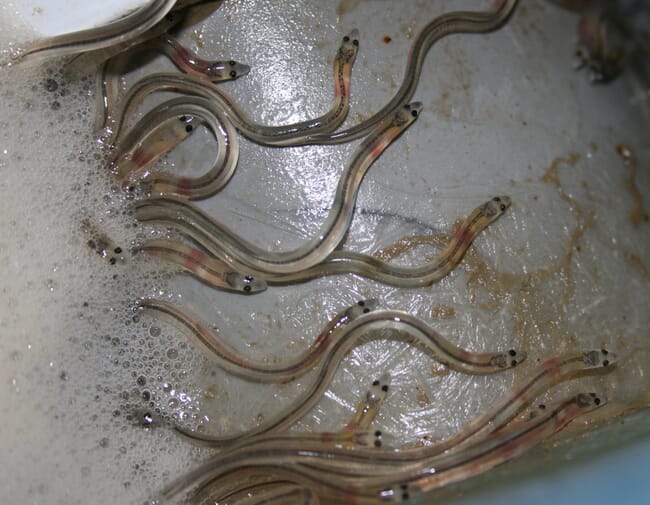
One of the main reasons for the decline of the eel stocks is that much of the natural freshwater habitat of the European eels has been drained or closed off by dams, locks and hydropower stations. Thus, a large proportion of the glass eels arriving at the coast will not be able to reach a suitable area to survive, and silver eels are unable to return to the ocean to mature and spawn.
Reopening the migration routes for the eel is key to the recovery of the stocks, but this will take time and money and it is not easy to move big, powerful organisations like hydropower companies and water-management authorities. Unless and until migration routes are reopened we have to help the glass eels move upstream to suitable areas to grow out to adults, and help silver eels to reach the ocean again so they can swim back to the spawning grounds.
To be sustainable, the eel farmers need to have zero impact on the natural eel stocks. Their use of glass eels to grow eels for consumption has to be compensated by measures to improve survival and recruitment of eels in the wild. This can be achieved in a combination of ways.
Using glass eels from areas with abundant recruitment will have less impact on the natural stocks. Restocking some of these eels in areas with high survival can yield a positive net benefit. By supporting and funding programmes that help mature eels from areas that have no safe or open connection to the sea to get safely “over the dyke”, the industry can further improve the natural recruitment. The Sustainable Eel Group and Eel Stewardship Fund (ESF) play a key role in these efforts.
What impacts are the actions of initiatives such as SEG and ESF having on the health of wild eel stocks and do you think that the aquaculture industry could in fact help to bolster wild eel stocks?
The Sustainable Eel Group was founded in 2010 by a group of scientists, conservationists and people with a commercial interest in eel. The overall aim for the industry, scientists and conservationists is to work together for the eel’s recovery, and as part of this the SEG scientists and conservationists developed the sustainable eel standard. This independently assessed standard covers the industry from glass eel capture to processing to demonstrate a commitment to sustainability and high standards with regard to capture, transport and culture in order to minimise wasteful losses and to safeguard the well-being of the eels in farming conditions. The SEG standard, among others, regulates where the glass eels may be harvested to minimise the impact on wild stocks and requires the eel farms to restock 10 percent or more of the glass eels they take in into natural waters to boost the wild stocks.
In the main eel-farming countries Holland and Germany – and as will soon also be the case in Denmark – eel farmers, fishermen and processors have established their national Eel Stewardship Fund. These funds aim to deliver a substantial contribution to their national eel plans in order to accelerate and exceed each plan’s stated goals. The funds raise a substantial amount of money from proceeds of ESF-labelled eels, government grants and donations. In Holland virtually all eels sold now carry the ESF label and the total yearly proceeds of the fund exceed €1 million. With this money, ESF supports a large number of activities including the restocking of (glass) eels, the transfer of mature eels to the sea (“eels over the dyke”), education and research supporting recovery initiatives and research on the reproduction of the European eel.
Do you think it will ever be possible to close the cycle of eel production?
The cycle has already been closed for the Japanese eel, where scientists managed to spawn eel, grow out larvae to adult size and collect eggs and produce a second generation of captive eels – so far only in small quantities though.
Thanks to a large effort across Europe, we are able to produce larvae of the European eel, but so far it has not been possible to make these eels feed and grow. The scientists are making progress, though. Scientists from 12 universities from all over the world – including two Japanese institutions – are combining their strengths in order to speed up the reproduction process. At this moment the production of eggs is quite satisfactory. In the coming years, the focus will be on the production of healthy larvae and finding a suitable feed for these.

© Joost Blom, BioMar
How do you see the industry developing in the next decade and what are the main challenges it will need to overcome?
After years of decline since the turn of the millennium, the eel industry has found a new balance between production and demand in the last few years. Industry efforts like the Eel Stewardship Fund are being adopted by more countries and make the sector a key player in the recovery of the eel through restocking, aiding silver eel escapement and research. Adaptation of the SEG standard by glass eel fishermen, farmers and processors further underlines the responsible approach the industry is taking to the exploitation of wild glass eel stocks.
By the end of this year, the SEG standard will receive ISEAL membership, a well-deserved reward for a decade of efforts to help the eel and a sign that eel recovery and consumption can go hand in hand. We expect that this will not only boost recovery but will also help bolster eel sales and that there is a potential for the industry to grow, but to a limited extent.
One challenge that does need to be addressed is the illegal export of glass eels to China. With shortages of Japanese and American glass eels and record prices, the demand from China for glass eels is huge. Organisations in Europe earn millions by trafficking eels to Asia, and each year some of them are closed down. But with huge profits to be made it is difficult to put an end to it.
The eel industry, therefore, is a strong supporter of more transparency and full traceability in the glass eel trade. The SEG standard will prove to be very important: because of the full transparency of this standard throughout the supply chain (chain of custody), trafficking will be minimised in the future so the European eel stays where it belongs – in Europe.



